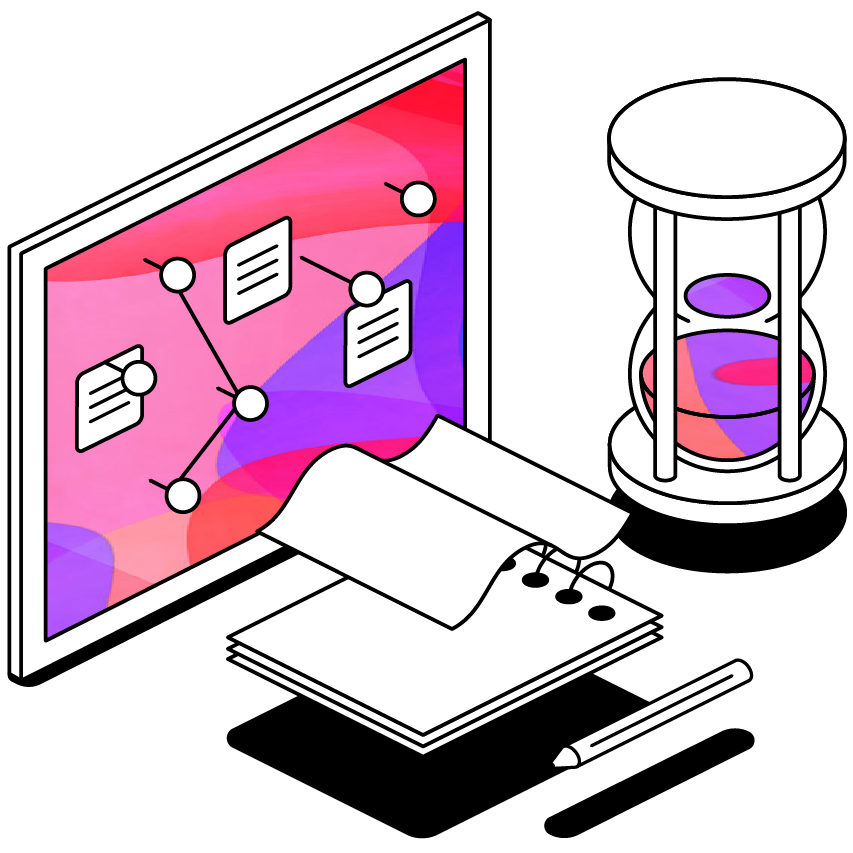Dyslexia in the workplace: fostering inclusion for individuals with dyslexia
Dyslexia isn't one-size-fits-all. It manifests differently in everyone, with its own set of unique challenges. That means organisations need to foster a culture of inclusion to unlock the untapped potential of their team.
 2 min read
2 min read
 Published: 9 Feb 2024
Published: 9 Feb 2024
 Pete Artemiou
Pete Artemiou


Did you know that Albert Einstein, Agatha Christie, and Richard Branson are just a few prominent figures who thrived with dyslexia?
This learning difference, affecting at least 1 in 10 individuals, doesn't define intelligence but rather signifies a different way of thinking.
This article dives into dyslexia in the workplace, offering practical steps for organisations to harness their unique strengths and build a vibrant, inclusive culture.
Understanding dyslexia's spectrum
Dyslexia isn't one-size-fits-all. It manifests differently in everyone, with its own set of unique challenges.
One individual might struggle with decoding written text, while another might grapple with organisational skills or auditory processing. Some might even experience co-occurring learning differences like ADHD, further adding to the complexity.
Recognising this spectrum and its nuances is crucial to providing effective support and unlocking unique strengths.
Challenges faced and strengths untapped
It's true that dyslexia can present hurdles in tasks like deciphering reports, composing emails, or keeping pace with rapid communication. However, focusing solely on these challenges paints an incomplete picture. Individuals with dyslexia often possess remarkable strengths in areas like:
- Creative problem-solving: their unique thought processes allow them to approach problems from unconventional angles, leading to innovative solutions.
- Visual-spatial reasoning: many excel in visualising concepts, diagrams, and designs, making them invaluable assets in fields like architecture, engineering, and computer graphics.
- Strong intuition and "big picture" thinking: their ability to see beyond the immediate often leads to insightful observations and strategic thinking.
By recognising and valuing these strengths, organisations can harness a wealth of untapped potential, leading to increased innovation, diverse perspectives, and a more dynamic work environment.
Fostering an inclusive culture
Creating a truly inclusive workplace goes beyond simple awareness campaigns. It requires a multi-pronged approach that addresses individual needs and fosters a culture of acceptance and collaboration.
Here are five key steps organisations can take:
- Awareness and education: educate employees about dyslexia and neurodiversity through workshops, training sessions, and information campaigns. This fosters understanding and empathy.
- Reasonable adjustments: implement practical adjustments like assistive technology, flexible work arrangements, and clear communication guidelines to support individual needs.
- Positive work environment: cultivate a culture of open communication, respect, and collaboration where everyone feels valued and comfortable disclosing their neurodiversity.
- Celebrating differences: recognise and celebrate the unique strengths and contributions of neurodivergent individuals. This fosters a sense of belonging and motivation.
- Leadership commitment: visible leadership commitment to inclusion sets the tone for the entire organisation and encourages employees to champion diversity.
The ROI (return on investment) of inclusion
Embracing neurodiversity isn't just the right thing to do; it's a strategic advantage.
Studies show that neurodiverse teams demonstrate increased creativity, innovation, and problem-solving skills. Fostering an inclusive culture also leads to higher employee engagement, reduced turnover, and improved overall organisational performance.
It's a win-win for everyone involved.
A journey, not a destination
Building an inclusive workplace is an ongoing journey, not a one-time achievement.
Regularly review your practices, seek feedback from neurodivergent employees, and stay informed about evolving best practices.
Remember, every individual's experience is unique, and tailoring support accordingly is key to creating a truly thriving and sustainable work environment for everyone.
Unlocking potential, shaping the future
Dyslexia and neurodiversity offer not just challenges, but a unique perspective and hidden potential waiting to be explored.
By embracing differences, providing necessary support, and fostering an inclusive culture, organisations can tap into a vibrant wellspring of talent, innovation, and diverse perspectives.
Let's unlock this potential and shape a future where everyone, regardless of their neurodiversity, can thrive and contribute their unique strengths to the world.






